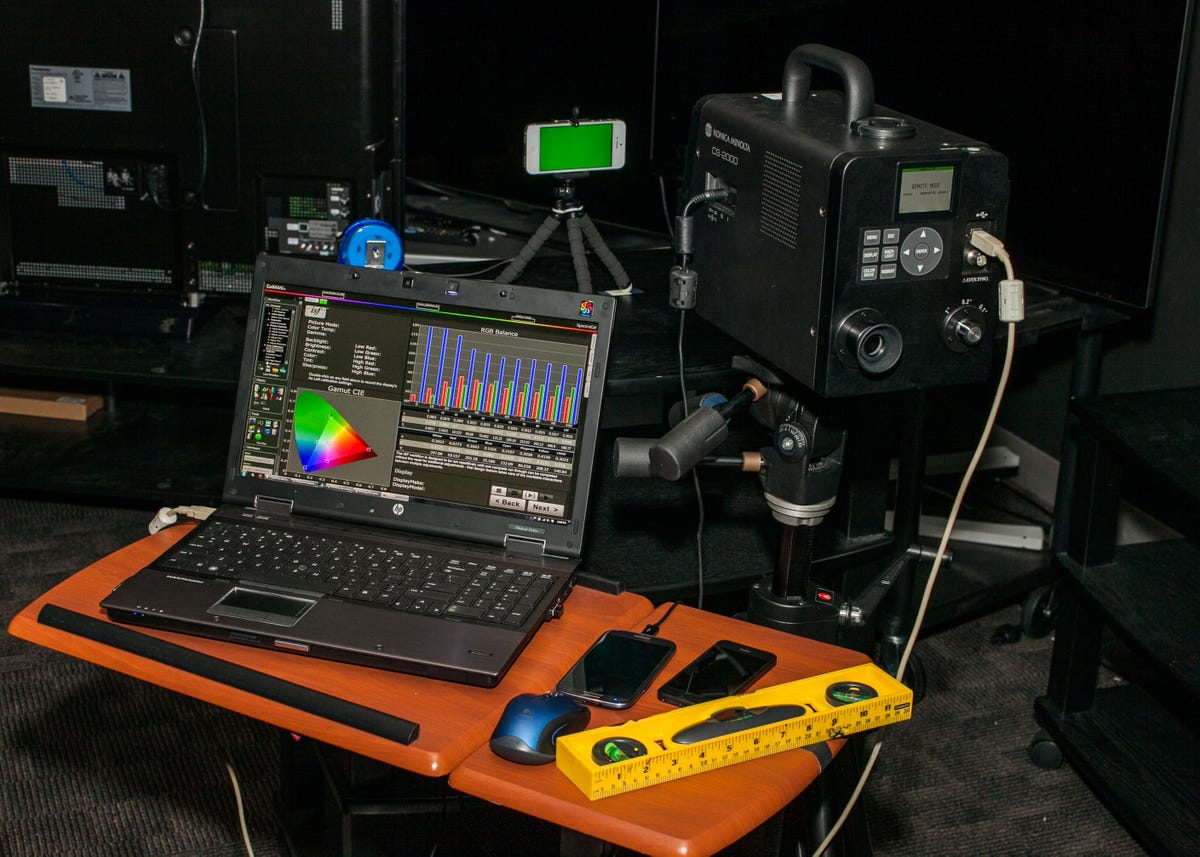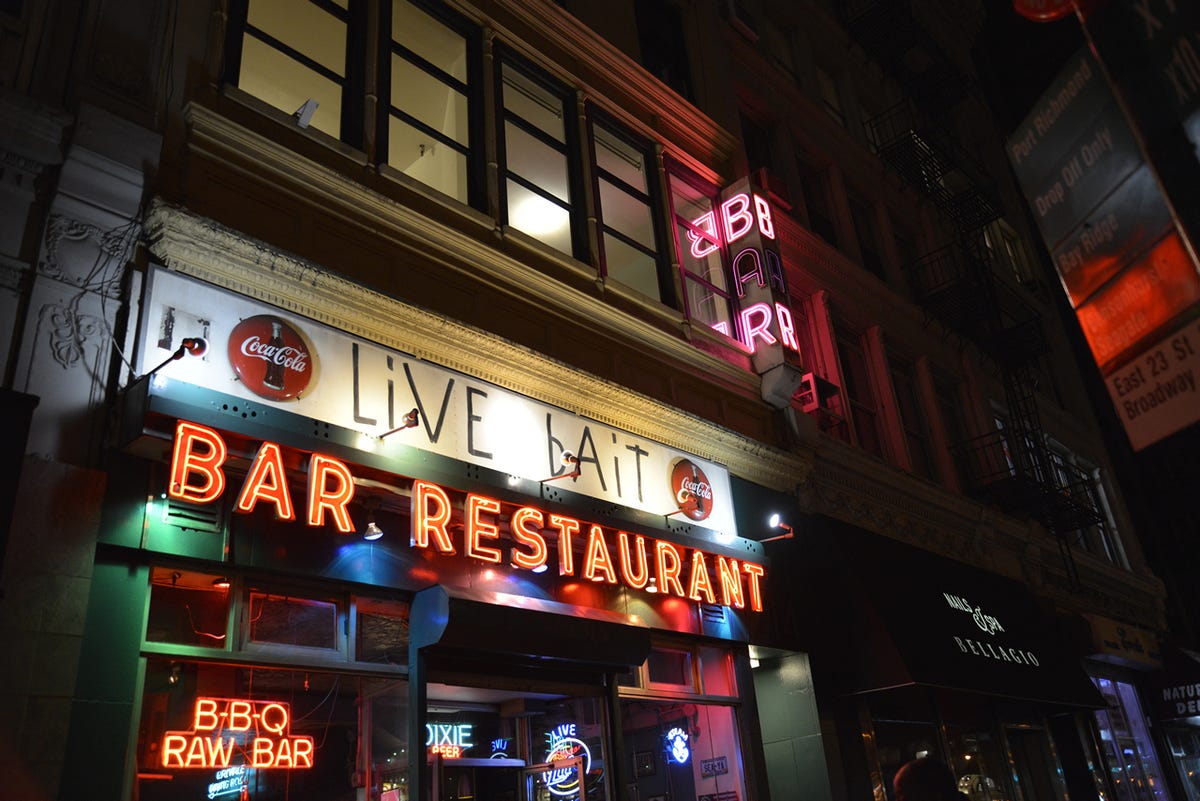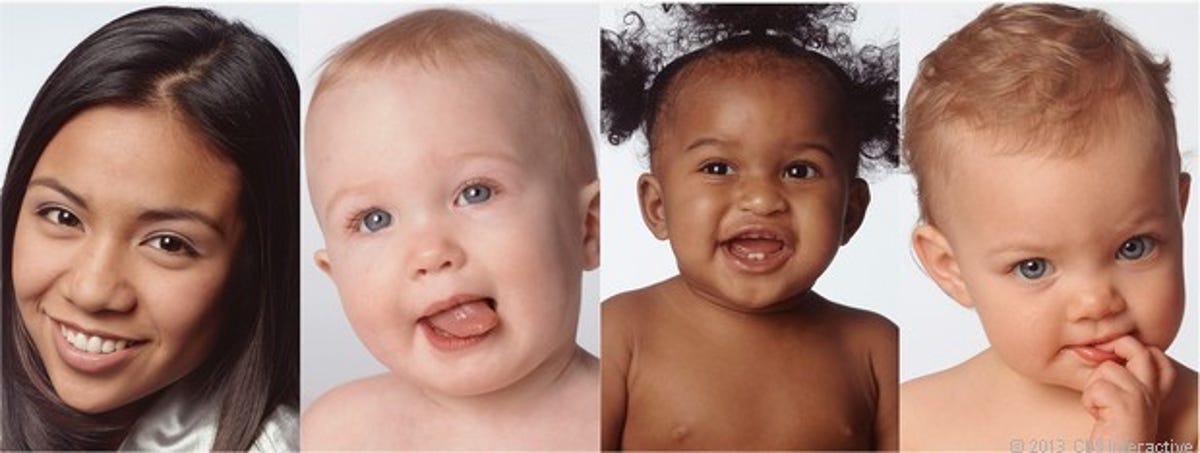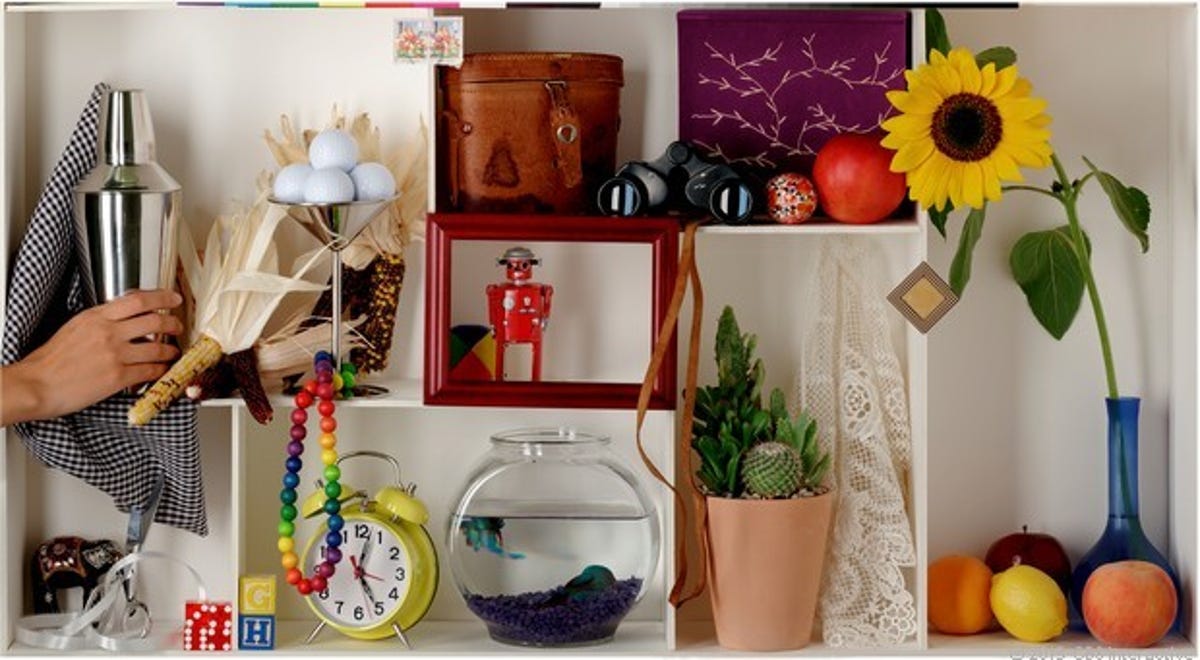The two hottest flagship Android smartphones right now, the HTC One and the Samsung Galaxy S4, both earned CNET’s Editors’ Choice Awards for their stellar designs, massive feature sets, and overall appeal.
So which one has the better screen?
In the tradition of our original screens tests last year, we set out to answer that very question. We used a combination of objective measurements courtesy of the same expensive test gear we use to evaluate and calibrate HDTVs, and subjective observations courtesy of our priceless, expert eyes.
As we found previously, each screen has particular strengths and weaknesses, but to our minds the Samsung Galaxy S4 has the better screen. Its victory over the One, however, was by no means a slam dunk.
Overall color accuracy between the two is nearly a wash by the numbers, and the One has a decided advantage in brightness — making it the better choice if you spend a lot of time outdoors under a bright sky. But the deeper black levels and insane contrast of the GS4, along with the versatility afforded by its many settings, helped put it over the top.
By the numbers
.spinnerTable th:first-child{min-width:175px;}
| Test | HTC One | Galaxy S4 (adjusted) |
|---|---|---|
| Full brightness | ||
| 100% (white) | 498.54 | 285.54 |
| 0% (black) | 0.2853 | 0.0005 |
| Contrast ratio | 1,747:1 | 571,080:1 |
| Grayscale error | 6.59 | 4.55 |
| Average color error | 16.15 | 18.77 |
| Red error | 15.65 | 20.59 |
| Green error | 14.12 | 17.09 |
On the chart above, higher numbers are better for 100 percent white and contrast ratio. Lower numbers are better for 0 percent black, grayscale, and color errors. The light output (white and black) numbers are in nits (cd/m2); the contrast ratio calculated from those, and the error figures are Delta E 2000 per the Calman 4 software we used for this evaluation.


Like most phones, the HTC One doesn’t allow you to make adjustments to the screen quality beyond disabling the room lighting sensor and tweaking brightness. The GS4 is a different story. It has two different additional settings that dramatically affect the image on the screen.
The first is Screen mode, found in the Settings menu under the My Device tab when you hit Display. When you deselect the Adapt Display check box you can select from Dynamic, Standard, Professional Photo, or Movie. We measured them all, and Movie delivered the most accurate color. Its saturation error in particular is much lower than that of the other modes. Movie mode’s advantage over the others isn’t as strong as it was on the Note 2, however.
The second is called “Auto adjust screen tone” (AAST), found on a check box at the bottom of the Display menu, and it’s enabled by default. Uncheck it and the phone’s full light output capabilities are unshackled, going from 178 nits to 285, improving its contrast ratio and its ability to compete with ambient light.
“Adjusted” means that we turned on Movie mode and unchecked AAST, since those settings provided the most accurate color and maximum contrast/light output.


Sarah Tew/CNET
Brightness, black level, and contrast
The HTC One’s 500 nits of light output is its greatest advantage over the GS4, which can’t quite reach 300. That means it will produce better picture quality and be more legible in very bright lighting like sunlight or direct indoor light.
On the other hand, the latest-generation OLED screen of the GS4 can technically get 500 times darker (!) than the HTC. In a completely dark room, like the one in which we measured the phones, a black (0 percent stimulus) test pattern filling the screen of the GS4 was barely visible; the same pattern on the HTC One was much brighter. The difference was less obvious, although still visible, under normal lighting when looking at material with black and near-black sections.
Related stories
- Screens test, part 2: Galaxy Note 2 vs. Apple iPhone 5
- Screens test: Apple iPhone 5 vs. Samsung Galaxy S3
- HTC One review
- Samsung Galaxy S4 review
- How we test: TVs
Contrast ratio is the difference between the brightest image a display can create and the darkest. According to our measurements in a completely dark room, the GS4 offers roughly 360 times as much contrast as the HTC One.
Of course, with text, regular photos, and video, especially in the presence of ambient light, the visible difference isn’t nearly as great as that number implies. That said, side by side in an indoor environment under moderate or darker lighting, the better contrast of the Samsung’s screen will cause its image to look punchier, especially with high-contrast material like dark scenes in a movie or a nighttime photo.
Under normal room lighting or brighter, particularly a daytime sky, that advantage will dwindle and the brighter screen of the One will shine through, overcoming ambient light to provide a more legible, clearer image for all types of material. The HTC One’s much brighter display makes it the better choice if you spend most of your day outdoors. Under strong sunlight, you’ll be glad to have those extra candelas at your disposal, especially when using the screen as the camera’s viewfinder.
Which phone looks better overall in terms of contrast depends on ambient lighting, what material you’re looking at, and the brightness you have the screen set to (at half brightness, for example, the contrast ratio of the Galaxy S4 drops roughly in half, while the One’s remains about the same).


Lori Grunin/CNET
Color accuracy
Neither phone measured as well as either the Samsung Galaxy Note 2 in its Movie mode or the iPhone 5. But when we looked at our trusty photo montage (thanks to CNET’s senior digital imaging editor, Lori Grunin) the GS4’s Movie mode gave it the advantage in many images over the One. A shot of various skin tones looked much more natural on the Samsung, compared with the too-reddish/bluish tinge we saw on the HTC. Take our word for it when we say we’d rather not gaze at artificially jaundiced tots, and your friends and family will likely feel likewise.


Lori Grunin/CNET
On the other hand some colors, in particular red, looked entirely too muted and sometimes orangish on the Samsung; the red from neon signs at night looked better on the HTC. Of course, if you like that highly saturated look, you can always engage another Screen mode on the GS4; advantage Samsung.
Another visible difference between the two was in their color of gray. The One tended toward a bluish cast while Movie on the GS4 was more green, differences that became more visible in more black-and-white images. Overall we preferred the bluish tint slightly, but neither was ideal.
Movies and video
The Samsung Galaxy S4’s higher contrast and black levels made plenty of impact when watching video. Scenes from the sci-fi classic “Star Trek: The Motion Picture” were particularly striking on the Galaxy S4, especially the contrast between the blackness of space and twinkling stars. When we viewed the same footage on the HTC One, the scene looked washed out by comparison.
The color accuracy difference was also critical in the “Star Trek” test movie. While viewing the film on the HTC One, Kirk’s and even Spock’s pale Vulcan face often had a distracting orange and ruddy cast. We’re sure the director didn’t intend this sort of palette.
We also appreciated the much wider viewing angles the Galaxy S4 brings to the table over the HTC One. This characteristic comes into play when showcasing video for a crowd, or if the phone is propped up on a surface out of direct line of sight.
Screen size and resolution
When it comes to screens, size really does matter. The HTC One’s display features the same 1080p full HD resolution as the Samsung Galaxy S4. The detail is so fine on both phones that when we loaded up 1080p resolution patterns, which fill the screen with 1,920 and 1,080 black-and-white lines (one for each horizontal and vertical pixel), we needed a jeweler’s loupe to actually discern the individual lines. It was impossible with the naked eye no matter how close we held the phones, and we couldn’t discern any real difference in detail or sharpness between them.
That said, the One measures 4.7 inches diagonally, while the GS4 spans a slightly larger 5 inches. Such a small difference has more of an effect in person than you might imagine. Placing the two side by side, we certainly noticed that the GS4’s bigger visual real estate presented less eye-straining views of full desktop Web pages. Sure, you could always hold the HTC One closer or zoom in tighter, but you can’t get around the fact that you simply see larger text and imagery on the GS4.


Lori Grunin/CNET
Conclusion
As always it comes down to personal preference. Some viewers might like the GS4’s epic contrast or the ability to “pick your color” with its screen modes, while others may really appreciate the One’s blazing brightness.
In our first screens test between the iPhone 5 and Samsung’s GS3, the iPhone’s combination of superior light output and exacting color beat out the better contrast of OLED. Our second test resulted in a tie between the iPhone and the Note 2. This time around the phones are different, and so is the conclusion.
Color accuracy is less than perfect on both the GS4 and the One, but for most photos and video we both liked the color on GS4’s Movie mode better — and if you don’t, you can always change it, an option that doesn’t exist on the One. The GS4 is bright enough for most lighting situations (brighter than both the Note 2 and the GS3), and its deep black levels make the image pop for all kinds of material. Unless you’re an outdoorsy type or just need as much light output as possible, the GS4 has the superior display.
Finally, it bears repeating that we consider screen quality less important than numerous other factors, like handset design, size, brand, carrier, software, and ecosystem. It’s still important enough to test, though, especially in pricey flagship phones we use to consume entertainment of all kinds.
Want a deep dive into how we test superphone screens? For details on methodology check out the original screens test, and for the raw numbers we gather from the two phones, see the charts below.
Screens test: HTC One vs. Samsung Galaxy S4 (pictures)









